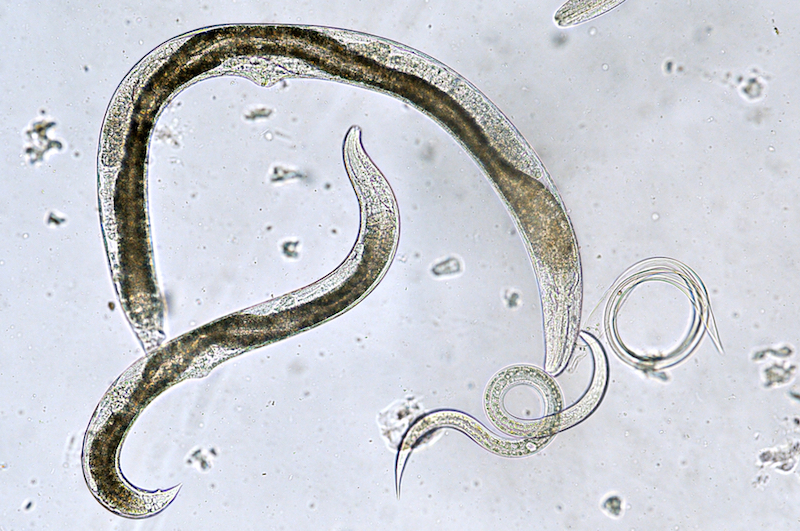Teensy, Eyeless Worms Have Completely New Light-Detecting Cells

It may sound like a mutant superhero power, but a tiny, eyeless roundworm has a new type of light-detecting cell in its eye. And the photoreceptor is 50 times more efficient at capturing light than its counterpart in the human eye is, a new study finds.
An international team of researchers found the photoreceptor, called LITE-1, in the millimeter-long nematode Caenorhabditis elegans, a model animal that scientists often use in research. The finding is a remarkable one, they said, as it's only the third type of photoreceptor to be identified in animals. (The other two are opsins and cryptochromes, they said.)
"Our experiments also raise the intriguing possibility that it might be possible to genetically engineer other new types of photoreceptors," senior study author Shawn Xu, a professor in the Department of Molecular and Integrative Physiology at the University of Michigan Medical School, said in a statement. [See Photos of a Worm with 5 Shape-Shifting Mouths]
The research team found LITE-1 within a family of taste receptors (cells that send taste signals to the brain) first discovered in insects, but that are also present in most invertebrates (animals without a backbone). "These, however, are not the same taste receptors as in mammals," Xu said.
An earlier study published by Xu and his colleagues showed that although nematodes have no eyes, they still move away from flashes of light. The new study suggests why: Instead of serving as an intermediary that senses chemicals formed by light reactions, LITE-1 absorbs light directly, "indicating that LITE-1 is highly efficient in capturing photons," they wrote in the study.
"Photoreceptors convert light into a signal that the body can use," Xu said. "LITE-1 is unusual in that it is extremely efficient at absorbing both UV-A and UV-B light — 10 to 100 times greater than the two other types found in the animal kingdom: opsins and cryptochromes. The next step is to better understand why it has these amazing properties."
After analyzing LITE-1's genetic code, the researchers realized that it was extremely different from photoreceptors found in plants, animals and microbes, Xu said.
Get the world’s most fascinating discoveries delivered straight to your inbox.
Moreover, LITE-1 has several unique features. In animals, photoreceptors usually have two components: a base protein and a chromophore (a light-absorbing compound). If these two components are broken apart, the chromophore is still able to work, though not as well, the researchers said.
In contrast, LITE-1 can't absorb light if its two components split up, Xu said.
In addition, the team found that LITE-1 is dependent on the amino acid tryptophan, which is present in two different places within it. To test this, researchers added a modified GUR-3, a nonlight-sensitive protein in the same family, to the tryptophan residues. However, GUR-3 only had about a third of the sensitivity to UV-B as LITE-1 did, they found.
"This suggests scientists may be able to use similar techniques to genetically engineer other new photoreceptors," Xu said.
He called the new research an "entry point," and was optimistic that once researchers figured it out, LITE-1 could be useful in a number of ways. For example, perhaps LITE-1 could be added to sunscreen to help absorb harmful rays, he said. Or maybe LITE-1 could be useful in research by making different cells sensitive to light, the researchers wrote in the study, published online today (Nov. 17) in the journal Cell.
Original article on Live Science.

Laura is the managing editor at Live Science. She also runs the archaeology section and the Life's Little Mysteries series. Her work has appeared in The New York Times, Scholastic, Popular Science and Spectrum, a site on autism research. She has won multiple awards from the Society of Professional Journalists and the Washington Newspaper Publishers Association for her reporting at a weekly newspaper near Seattle. Laura holds a bachelor's degree in English literature and psychology from Washington University in St. Louis and a master's degree in science writing from NYU.


